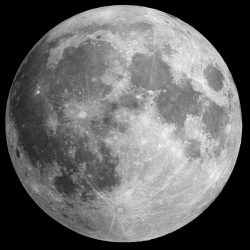
NASA’s Asteroid Redirect Mission, the space agency’s initiative to capture a small piece of an asteroid and then bring it into lunar orbit, is moving on to Phase A. That means the project is going beyond the concept phase now, and engineers will get to work designing and making the hardware to turn the mission into reality.
At a press teleconference today, NASA Associate Administrator Robert Lightfoot detailed the expected timeline for ARM as well as how NASA plans to wrangle this asteroid boulder. The intended plan is a lengthy one: A robotically controlled spacecraft will launch in 2020 and spend a couple of years traveling to a pre-approved asteroid target. So far, NASA has three asteroid candidates in mind, frontrunner 2008 EV5, followed by asteroids Itokawa and Bennu. Lightfoot says they won’t announce the lucky winner until 2019.
Once the spacecraft reaches the intended asteroid, it will spend up to 400 days at the space rock, analyzing its surface and choosing the best boulder for plucking. The size of the boulder will depend on how big the asteroid target is, but NASA is hoping to get one that’s up to 13 feet wide. Then, it will deploy a robotic arm (ARM’s arm, if you will) and grab the boulder for a return trip back home. According to Lightfoot, the ARM spacecraft should be back near Earth with its asteroid loot a few years later.
But the mission doesn’t end there; next comes the human exploration phase. After the vehicle makes it back to near-Earth space, it will move the boulder into a stable orbit around the Moon. That positioning will make it easy for NASA astronauts to rendezvous with the boulder around 2025. The plan is to launch a two-person crew aboard the soon-to-be-built Space Launch System, which will then dock with the spacecraft-boulder combo. There, the crew will spend up to three-and-a-half weeks analyzing the rock, though Lightfoot didn’t specify the exact components of the mission.
During the initial unmanned portion of the trip, NASA will test out “planetary defense techniques” to see if ARM technology can help alleviate the threat of an asteroid impact on Earth. While ARM is still near its target asteroid, the space agency will try to use the gravity of the spacecraft and its captured boulder to alter the path of the asteroid. If ARM can alter the asteroid’s trajectory even just a slight amount, that could fundamentally alter where the space rock is headed months and years later. Such a technique could potentially be used to steer life-destroying asteroids away from our precious planet.
